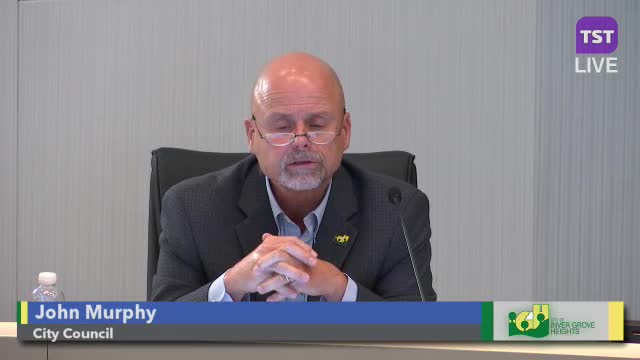City Council Faces Fuel Storage Crisis Amid Code Conflicts
July 22, 2024 | Inver Grove Heights, Dakota County, Minnesota

This article was created by AI summarizing key points discussed. AI makes mistakes, so for full details and context, please refer to the video of the full meeting. Please report any errors so we can fix them. Report an error »

In a recent government meeting, officials discussed significant concerns regarding fuel storage regulations in the I-1 zoning district, particularly focusing on a proposed 20,000-gallon methanol tank. The current zoning code prohibits such storage, and the city’s fire code limits fuel storage to 500 gallons for single tanks and 1,000 gallons for dual tanks. This discrepancy has led to complications for businesses seeking to comply with both zoning and fire regulations.
During the meeting, it was revealed that two other locations in the area had also encountered issues with excess fuel storage. One business has already resolved its compliance issue by reducing its tank size, while another is still in the process of addressing the matter. Officials indicated that if a variance request for the larger tank is denied, businesses would typically be given a 90-day period to comply with the regulations.
Council members raised questions about the potential for similar issues in the area and whether the existing fire code might need revisions. Staff suggested that the language regarding tank sizes could be better integrated into the zoning ordinance for clarity. The discussion highlighted a need for a comprehensive review of the regulations governing fuel storage to ensure they align with current practices and safety standards.
Assistant Chief Oswald noted that while the I-1 district allows for outdoor fuel storage, the exact number of locations with tanks exceeding 500 gallons is not tracked. The fire code, amended by the city, is more stringent than the state fire code, which allows for larger tanks. This amendment was originally intended to prevent the use of above-ground tanks, which are considered a fire hazard.
The council is expected to take action on the matter soon, with options to either approve or deny the variance requests, or to revisit the underlying regulations to better accommodate businesses while ensuring public safety.
During the meeting, it was revealed that two other locations in the area had also encountered issues with excess fuel storage. One business has already resolved its compliance issue by reducing its tank size, while another is still in the process of addressing the matter. Officials indicated that if a variance request for the larger tank is denied, businesses would typically be given a 90-day period to comply with the regulations.
Council members raised questions about the potential for similar issues in the area and whether the existing fire code might need revisions. Staff suggested that the language regarding tank sizes could be better integrated into the zoning ordinance for clarity. The discussion highlighted a need for a comprehensive review of the regulations governing fuel storage to ensure they align with current practices and safety standards.
Assistant Chief Oswald noted that while the I-1 district allows for outdoor fuel storage, the exact number of locations with tanks exceeding 500 gallons is not tracked. The fire code, amended by the city, is more stringent than the state fire code, which allows for larger tanks. This amendment was originally intended to prevent the use of above-ground tanks, which are considered a fire hazard.
The council is expected to take action on the matter soon, with options to either approve or deny the variance requests, or to revisit the underlying regulations to better accommodate businesses while ensuring public safety.
View full meeting
This article is based on a recent meeting—watch the full video and explore the complete transcript for deeper insights into the discussion.
View full meeting
